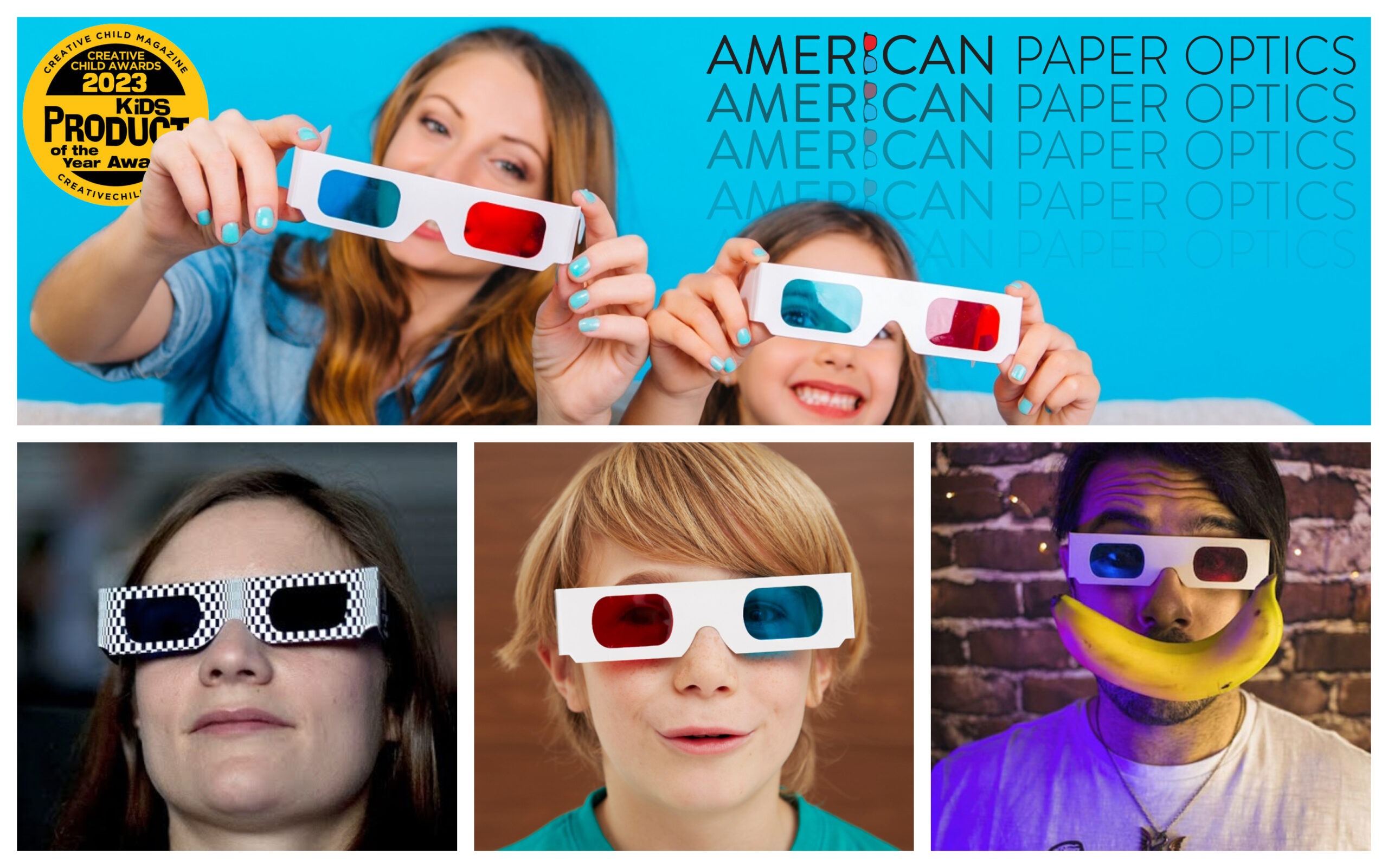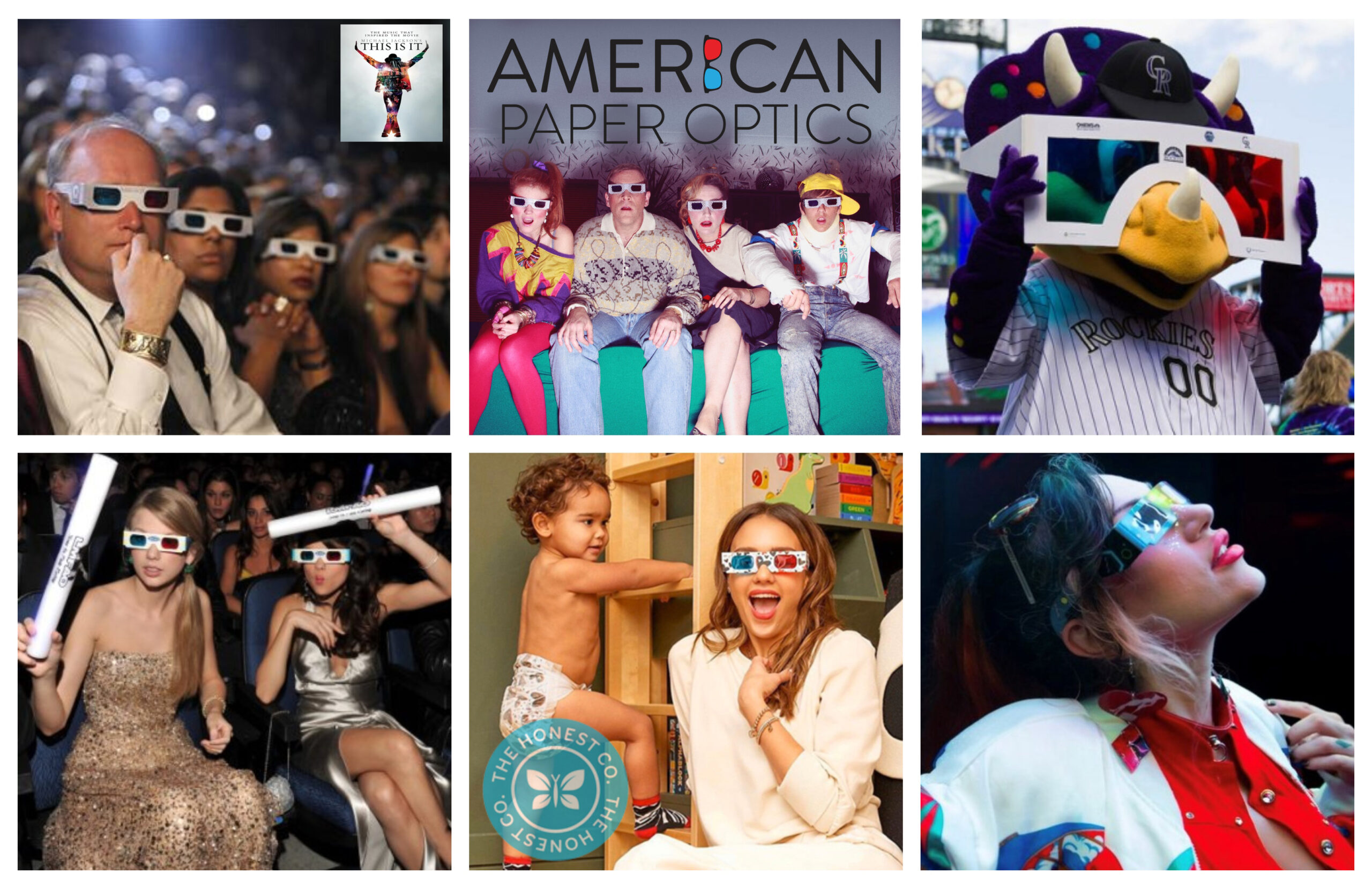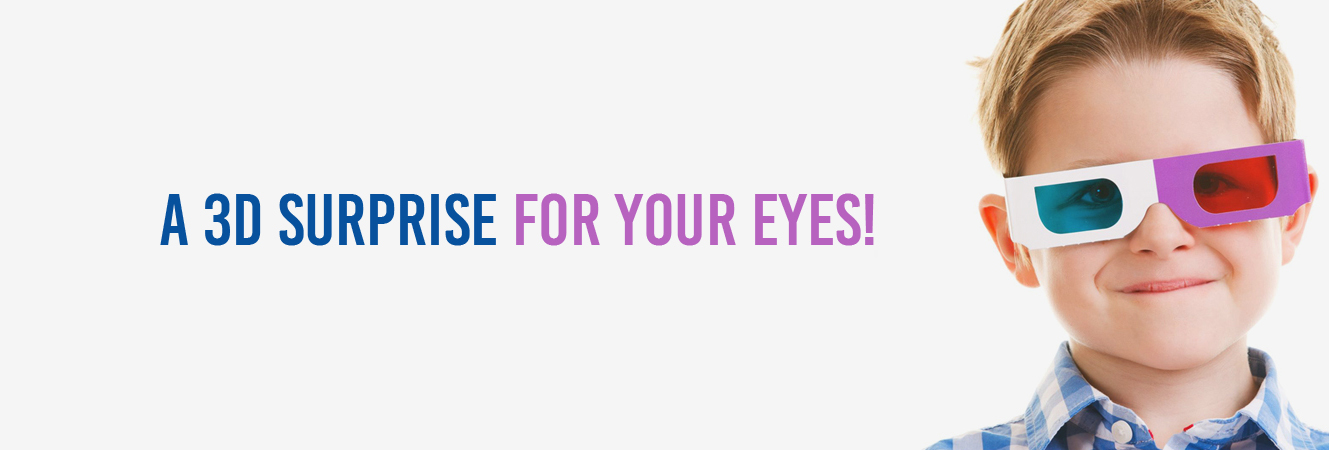The human dome (head) functions well as a 3D viewing tool. Seriously. The gap between our eyes allows us to see items in the distance and judge the shape, distance and depth of items in our field of vision. When we look at a picture or a film, we’re generally trapped into a two-dimensional viewpoint because the image was taken with just one camera.
However, 3D photos and films are captured from multiple angles. These angles are then superimposed on top of one another. Because the distance between our eyes, noted above, is already a 3D viewer, images and films designed to be seen in three dimensions look fuzzy and off-kilter to our eyes. To make these superimposed images work, we need 3D glasses to create depth and distance.
In the world of 3D filmmaking, it’s important to note that some theater owners considered mounting 3D viewers to the floor in front of each theater seat. However, this process proved too costly and cumbersome. The ability to create 3D glasses for each viewer from cardboard or plastic glasses and a color or striated film did a lot to expand the power of 3D filmmaking. Once the film is completed and both images are superimposed, you can use 3D glasses on the image or movie to enjoy the effect.

What 3D Glasses Are and How They Work
Anaglyph lenses
Many of us have worn cardboard 3D glasses, also called anaglyph 3D glasses. These glasses feature a red lens and a cyan lens. The red lens filters out all red in an image and the cyan lens filters out all blue, giving the image shape and depth.
The brain is the ultimate 3D tool. You’re actually watching two movies at the same time; while the theme and characters may be the same, the viewpoint is unique.
Despite wearing glasses that block out color, you can still see some color in these 3D images. Your eyes do an amazing job of providing you with these colors across an image, even if one eye can’t see them at all.
Red and blue 3D glasses have been around for a long time. At one point in history, 3D glasses could be gotten on a box of cereal and a 3D image provided on the back of the box to capture the imagination!
The first 3D films used these red and blue glasses to great effect. The first 3D film to be commercially released was actually a love story, The Power of Love. Prior to this movie, filmmakers created shorts in which moving vehicles such as trains powered through a space, leaving viewers in fear of being run over as they viewed the moving image.
Polarized
A polarized or striated set of 3D glasses needs a polarized image to function, but the striated 3D allows much more color to be visible from behind the glasses. Multiple images from different angles are still critical to the process. These films are made by two different projectors, showing two different striated images. The striated glasses let in one image to each eye, creating the 3D effect.
To understand striated images, it’s important to think about sunglasses. Striated sunglasses don’t create a 3D effect because the focus of their polarization is to avoid horizontal glare. The polarization material in sunglasses is oriented horizontally in both lenses.
Striated 3D glasses feature two lenses that are each designed to omit different light. The brain collects these images, puts them together and creates a 3D image.
If you’re used to red and blue 3D glasses, you may be worried that the striated lenses won’t work; they may be slightly tinted, but they don’t look like the 3D glasses you may remember. However, these glasses actually allow viewers to see more color as they don’t block out red or blue.
As color picture shows became the norm, striated 3D glasses grew in popularity. To the naked eye, each lens looks exactly the same and offers a slightly gray or brown tint. The angling of the polarity is crucial to effective 3D glasses. The film Bwana Devil, released in 1952, used the striated lens film to great effect so viewers could enjoy the full color spectrum.
If you Google 3D glasses, you may see images of 3D moviegoers all wearing 3D glasses. Many of these images were taken of the first audience to see Bwana Devil.
Shutter
Another technology in 3D glasses is shutter or reverse strobe technology. This technology functions by alternately darkening your 3D lenses so quickly that you don’t notice it. As your eyes and brain adjust to the glasses, you’re functionally in the midst of a tiny strobe light show with the screen as the source.
As the images enter your brain in quick alteration from side to side, your brain will put them together in smooth order and you will be able to see the depth of the image from the dual projections on the screen. Sounds simple, right?
Many factors can affect the function of your reverse strobe glasses. The amount of light getting in above and below the frame may impact the quality of your viewing. Consistency of the darkening pattern from eye to eye can also make for a better (or worse) viewing experience.
Because reverse strobe glasses work by darkening and brightening alternating images, it’s important to consider them in relation to early moving pictures. Perhaps you’ve seen a flip book with a cartoon image. As you thumb through the book, you can see the image move. Old films often had jerky movements as the film images were taken and compiled too slowly to provide a smooth image. The new reverse strobe 3D glasses are quick enough to overcome that limitation and provide a smooth, moving image to 3D filmgoers.

How to Make Your Own 3D Glasses
We are the world’s largest 3D optics company, but we also love to spread the gift of 3D. So yes, you can make a simple pair of 3D glasses to block out red and blue. Be aware that the end result may not be the most colorful image.
To start, you will need a poster board that you can cut into frames to hold your red and blue plastic. You can find a basic pattern for your glasses here. Once you’ve traced and cut out your glasses, you’ll need red and blue acetate for the lenses.
Colored film can be tricky to cut; it may be tempting to leave the edges overhanging the edges of your cutout glasses. However, acetate is quite thin and may scratch your skin. Take the time to cut your lenses to fit.
Tape the acetate to your cardboard glasses. Again, pay careful attention to the edges so you don’t have acetate hanging off of the frames. Cut acetate can quickly become ragged and scratch your skin. Tape with care so you don’t leave any sticky residue on the colored acetate. As possible, avoid handling the acetate. Fingerprints will mar your field of vision.
Of course, the most important part of your DIY anaglyph 3D glasses is the color film. However, the other materials that go into your DIY 3D glasses can also impact your viewing enjoyment. As you use your glasses, keep an eye on the wear points. The hinges, or bent areas of cardboard that connect the earpiece to the acetate frames, will likely fail or become fragile with frequent bending. Make an effort to protect these hinges with tape or another coating so the cardstock doesn’t wear through with repeated use.
Take the time to create a flat space where you can store your 3D glasses. One of the challenges of working with acetate is that the material can scar if folded or scratched. Once your field of vision is impacted by damaged acetate, your enjoyment of the 3D film or game will be limited.
You can also purchase polarizing film and attach it to non-correcting glasses for a more colorful 3D experience. If you find peel and stick polarizing film, you’ll need to get some clear or cosmetic glasses to which you can attach your 3D film. Again, do your best to avoid leaving fingerprints on the film. Any debris or mark that breaks your field of vision may limit the fun of 3D movies and games.
Remember that polarizing film is oriented. On sunglasses, this orientation is horizontal to block out distracting glare. You want your polarizing orientation at 45 degrees to horizontal on one lens and at 90 degrees to the original polarization on the other eye. It can be tricky to get the polarization angle placed correctly. If the polarization is off, you may still get a 3D effect but it may appear fuzzy. Consider purchasing extra film and start with cheap plastic frames so you can experiment a bit.
Of course, it is also possible to add polarizing film to your cardboard frames. Because polarizing film orientation may not be visible to the naked eye, carefully mark your cardboard 3D glasses in the event that you need to replace a lens.
DIY shutter glasses are not really an option. If you’re a big fan of 3D images and films and want to invest in reverse strobe glasses, save your pennies and invest in a pair of good ones. DIY color and polarizing lenses will not be much better than a pair that you can purchase, but cheap reverse strobe glasses will limit your 3D enjoyment. Stick with the cardboard glasses until you can afford top quality reverse strobe glasses.
Many people rely on reverse strobe technology glasses for home use. There are also many game programs that include 3D imaging and work best with these high tech glasses. As possible, do what you can to make sure that the viewing room itself is quite dark. The darker the space, the more effective your glasses will be.
It is interesting that the reverse strobe action of these glasses can actually increase the safety of movie attendance for those that are photosensitive. If you struggle to tolerate the noise and bright lights of a movie theater, the reverse strobe action of these new glasses might actually make attending a 3D movie less of a hazard for you.

3D Glasses are not Eclipse Glasses!
It’s important to pay careful attention to what your 3D glasses can’t do. These glasses cannot protect your eyes from an eclipse. Even 3D glasses that use polarization or striation are not considered to be protective eyewear during an eclipse. Even the darkest sunglasses cannot protect your eyes from the intensity of the sun during an eclipse. To enjoy the eclipse, you would have to purchase your eclipse glasses from us!
Return to Blog Home





















